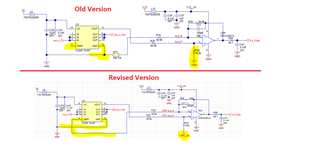Other Parts Discussed in Thread: OPA4340,
Hi Manish,
As you mentioned in the design guide, the LEM senor phase A has a noise issue. However, I noticed that the LEM sensor Phase B also has the same problem. I noticed that in the new schematic revision, the LEM sensors have been modified. I am wondering if the modification has solved the noise issue of the LEM sensor Phase A and B. If not, do you have any suggestion how to solve the noise issue of the sensors by applying filters in specific locations?

Regards,
Jalal


